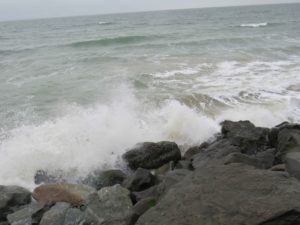James Joyce the renowned Irish author described the Atlantic ocean as a ‘Bowl of Bitter Tears’. He was of course alluding to the trauma of separation from the homeland of the Irish emigrant when immigrating to America.
In Australia migration began over 40,000 years ago when ancestors of Indigenous Australians arrived from the Malay Archipelago and New Guinea. In 1770 Captain James Cook, in the Royal Navy Barque Endeavour, charted most of the eastern coastline, landed on Possession Island, and claimed the eastern parts of the continent on behalf of the British Crown. Early Anglo-Saxon immigration to Australia began with the first fleet in 1788 and the introduction to Australia of convict settlers.
The loss of the American colonies following the Declaration of Independence of 1776, and the state of its overflowing prisons, spurred Britain to seek a new land suitable for a penal settlement. In 1787 the British Government sent a fleet of eleven vessels under the command of Captain Arthur Phillip to the nucleus colony of New South Wales. Captain Arthur Phillip said ‘I do not doubt that this country will prove the most valuable acquisition Great Britain ever made … How grand is the prospect which lies before this youthful nation’.
In January 1788 Captain Phillip raised the British flag at Port Jackson, marking the beginning of Anglo-Saxon immigration to Australia. Free settlers were not encouraged to immigrate so that amongst the 77,000 arrivals from 1788 to 1830 only 18% were free.
The official discovery of payable gold in Victoria in 1851 heralded an influx of immigrants from all over the world. Martha Clendinning described her 1852 journey leaving England for Port Phillip. During the voyage there was a duel between two passengers and towards coming into Port Phillip they were shipwrecked. Martha described the scene as their voyage drew to an end, and the coast of Australia came in sight, they became aware of the vicinity of the coast ‘from the delicious perfume wafted by the gentle breeze across the water’ to their vessel. ‘It was the aromatic odour of the gum trees that grew along the shore. Our prolonged voyage over the scentless ocean had made us deeply susceptible of it’ she wrote. ‘On one side, near Point Nepean, there arose above the water the upper parts of the masts of a wrecked ship, those of the Isabella Watson, that had run on the reef some months before and had been abandoned there. The afternoon was lovely – the brilliant midsummer sun of Australia showed distinctly the two reefs that projected from the land on either hand, guarding as it were the entrance to the Bay that stretched for forty miles to Melbourne an opening of about half a mile existed, by which vessels of all sizes passed in and out. Our captain was in great spirits, for he hoped to reach Melbourne that evening, the eighty-third day from England. At that time such a voyage was considered a very creditable performance’.
Martha and George Clendinning were among the many Anglo-Irish who immigrated to Australia, then journeyed to Ballarat during the height of the gold rushes in the 1850s.
